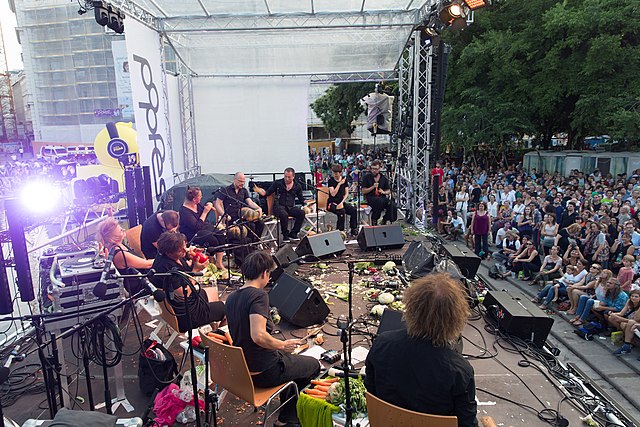From caves to cats: the world’s weirdest musical instruments
If you learn to play a musical instrument, there are certain staples that you’re likely to turn to – the piano, the guitar, the violin. But there’s a whole world of instruments out there beyond the traditional orchestra, and some of them are downright bizarre. After hearing about one instrument I couldn’t believe had been designed (more on that later), I dug into the world of weird musical instruments, and I wanted to share some of my findings.
One of the most well-known unusual instruments is the theremin. Patented in 1928 by Soviet inventor Leon Theremin, the instrument generates an electromagnetic field, and you create noise by manipulating this field with your hands. Despite its age, the theremin is still somewhat of a novelty because of the haunting sound it produces – you may detect it in sci-fi scores, or the theme to Midsomer Murders. We can make it a little weirder, though – in 2012, David Cranmer pioneered the Badgermin, a theremin concealed within a taxidermy badger.
What I’ve discovered doing this research is that instruments can be made out of anything. You may have heard of the Vienna Vegetable Orchestra, a 10-piece ensemble that plays Beethoven and Brahms with carrot flutes and a leek violin – the instruments normally only last six hours after being made. The Dutch artist Walter Willems made a working drum kit out of cheese, while the Norwegian composer Terje Isunget makes instruments out of ice extracted from frozen lakes. In the Luray Caverns in Virginia, Leland W. Sprinkle created a giant lithophone which uses rubber mallets to gently tap and get tones from stalactites.
Nature can be a great inspiration, and even a performer given the right instrument. In Blackpool, there is a High Tide organ – air is forced through it by the ebb and flow of waves, with the music depending on the vigour of the sea. If you prefer fire to water, you could play the pyrophone, an instrument powered by combustion – in order to play, a certain part of it needs to be on fire, typically powered by propane or gasoline. Perhaps most incredibly, William Close’s Earth Harp turns the venue itself into an instrument such that “the audience experiences the music from inside the instrument”. He has played it across canyons and mountains, where special gloves coated in violin rosin create symphonic tones.
It’s clear that anything can be (and, in most cases, has been) turned into a musical instrument
Some musical instruments are genuinely terrifying to listen to. If you follow this link, you can see someone playing a replica of an Aztec death whistle. It was an uncommon instrument that was shaped like a skull, and if you blow into it, it sounds like horrified and angry people screaming – the harder you blow, the more intense the screaming is. It is believed that the instrument was created in order to frighten enemy warriors before a battle, rather than for a musical performance, although some modern Mexican composers are now incorporating the sound into their works.
I want to wrap up with the strange instrument that inspired this article in the first place. In the 17th century, a type of instrument was designed called the Katzenklavier – literally, the ‘cat piano’. The idea was that it placed a normal keyboard in front of a line of cages, each of which would have a cat trapped inside. When the key was pressed, it would drive a nail into the tail of one of the cats, making it screech – the different tones of the screaming cats would provide the music. Fortunately, there’s no record of such an instrument ever having been made – the closest thing is the Monty Python ‘Musical Mice’ sketch.
I’ve barely touched on the sheer variety of interesting instruments out there, but it’s clear that anything can be (and, in most cases, has been) turned into a musical instrument. If you ever see one of these unusual instruments, give them a go – you may make music you didn’t even know was possible.

Comments